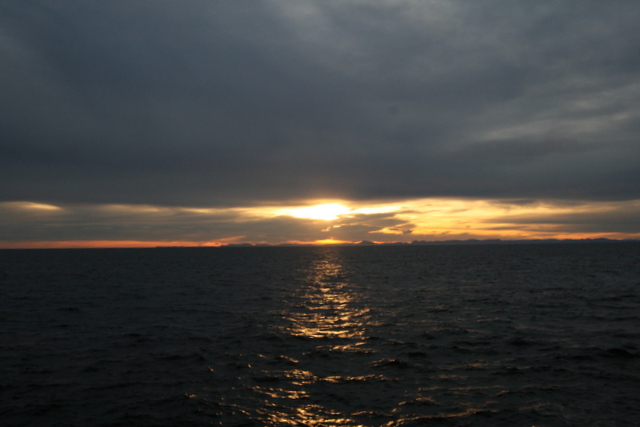I’m onboard the research vessel “G.O. Sars”, participating in the last MAREANO cruise of the year. We’re currently on our way back out to the sampling sites after seeking refuge in a fjord from the storm yesterday.

Sampling areas. The yellow area is finished, the brown ones are work in progress. From mareano.no
The area we’re working on is outside Møre & Romsdal, currently we’re on our way to a set of video stations whilst we wait for the sea swell to die down (it’s quite the rollercoaster here at the moment!). We have two-three full stations remaining, hopefully we’ll be able to finish those as well before the cruise ends this Friday.
“Full station” means that we in addition to videoing the sea floor for a 700m long transect with our remotely controlled video rig, the Campod 2, also collect physical samples.
This is done using a variety of gears, which collectively gives us a extensive insight in the properties of the area we’re working on. On board we have a team of biologists, geologists and a chemist. The geologists and chemist are after sediment cores, which provide a window back in time for analyses of the physical and chemical parameters of the sea floor, including the accumulation of pollution. How far back a core extends will depend on the sedimentation rate, and on how long the core we manage to extract is.
For collecting animals, we are using three main gears: the epibenthic RP-sled, the beam trawl, and the grab. These collect different parts of the fauna, and (together with the video) gives us a fair understanding of the species diversity and composition.

The grab (a van veen) collects a quantifiable amount of animals exceeding 1 mm in size living in the sediment. We collect two grabs at each full station.

A typical grab sample. We carefully rinse the mud through a 1 mm sieve, collecting the animals within it.

RP sled (left) and the beam trawl. The sled collects the small animals living just above and in the upper layer of sediment. The beam trawl collects the macro- and megafauna living above and within the top layer of the bottom.

Fulmars and gulls are following us, hoping we’ll give up on the small animals and start catching fish for them
Now we’ve arrived at the next station, so I’d better get going!













